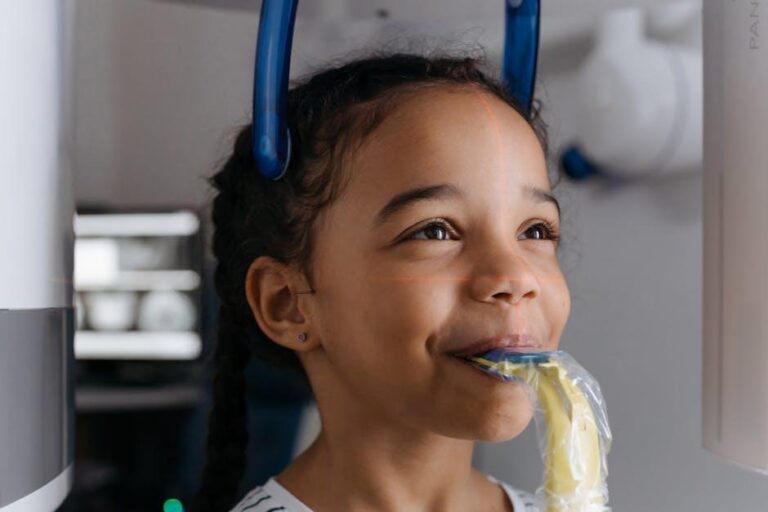1 in 3 Kids Has Dental Problems, Poll Finds – U.S. News & World Report
A recent poll cited by U.S. News & World Report has revealed an alarming statistic: one in three children in the United States is currently facing dental problems. This significant number shines a light on the pressing need to address pediatric oral health, highlighting the importance of regular dental care, preventive measures, and education for both parents and caregivers.
Why Are Dental Problems so Common Among Children?
Dental problems in children, especially tooth decay and cavities, are some of the most common chronic conditions in childhood. Several factors contribute to this high prevalence:
- Poor Oral Hygiene: Inadequate brushing and flossing can allow plaque buildup, leading to tooth decay.
- Diet High in Sugars: Frequent consumption of sugary snacks and drinks increases the risk of cavities.
- Lack of Regular Dental Visits: Missing routine checkups delays early detection and treatment of dental issues.
- Limited Access to Dental Care: Socioeconomic factors affect many families’ ability to afford or access dental services.
- Insufficient Fluoride Exposure: Fluoride helps strengthen teeth, and lack of it makes teeth more vulnerable.
The Poll Results: A Closer Look
According to the U.S. News & World Report poll, out of every three children surveyed, one struggled with a dental problem such as cavities, gum issues, or tooth pain. The poll also pointed out disparities in dental health related to:
- Age groups – younger children show more untreated cavities.
- Geographic regions – rural children often face greater challenges.
- Income and insurance status – uninsured kids experience more oral health problems.
| Demographic | Percentage With Dental Problems |
|---|---|
| Children under 5 years | 38% |
| Children in rural areas | 35% |
| Children without dental insurance | 42% |
Common Dental Problems Affecting Kids
1. Tooth Decay (Cavities)
The most frequent dental issue facing kids is tooth decay, caused by the buildup of plaque acid which destroys tooth enamel. Early signs often go unnoticed but untreated cavities can cause pain, infection, and even impact speech and eating.
2. Gum Disease (Gingivitis)
Though more common in adults, gum disease can develop early in children especially if oral hygiene is poor. Symptoms include red, swollen gums that might bleed easily.
3. Tooth Sensitivity and Pain
Many children report tooth sensitivity or pain while eating or drinking hot, cold, or sweet items, often signaling underlying dental issues.
Practical Tips for Preventing Dental Problems in Kids
The good news is that many dental problems in children are preventable with simple lifestyle changes and consistent care habits. Here are essential tips every parent can apply:
- Start Oral Care Early: Clean your baby’s gums with a soft cloth even before teeth erupt. Once teeth appear, brush twice a day with a small amount of fluoride toothpaste.
- Limit Sugary Foods and Drinks: Reduce intake of candies, sodas, and juices. Encourage water and healthy snacks instead.
- Schedule Regular Dental Visits: The American Academy of Pediatric Dentistry recommends the first dental visit by age 1 and then every six months thereafter.
- Use Fluoride Products: Fluoride toothpaste and treatments help strengthen enamel and protect against decay.
- Educate Your Kids: Teach children the importance of brushing and flossing techniques through fun and engaging methods.
Case Study: A Family’s Journey to Better Oral Health
The Johnson family from Ohio noticed their seven-year-old son, Liam, complaining of tooth pain and reluctant to brush his teeth. Following a dental checkup, he was diagnosed with multiple cavities caused by daily soda consumption and inconsistent brushing. With guidance from their pediatric dentist, they:
- Reduced sugary drinks to rare treats.
- Started using a child-friendly fluoride toothpaste together.
- Created a reward chart to encourage consistent brushing.
- Committed to routine dental checkups every six months.
Within six months, Liam’s oral health improved dramatically with no new cavities and healthier gums, demonstrating how proactive steps can reverse negative trends.
Benefits of Early and Consistent Dental Care
When children maintain good oral hygiene and receive proper dental care, they experience a host of benefits:
- Prevention of Pain and Infection: Early care avoids painful dental procedures.
- Improved Nutrition: Healthy teeth make it easier to eat a balanced diet.
- Better Speech Development: Healthy teeth help children speak properly.
- Self-Confidence: Bright, healthy smiles boost self-esteem.
- Long-term Health: Good dental habits established in childhood often last a lifetime.
Conclusion: Taking Action Against Pediatric Dental Problems
The finding that 1 in 3 kids has dental problems is a call to action for parents, caregivers, and healthcare professionals alike. By understanding the causes, recognizing the warning signs, and embracing practical prevention strategies, families can protect children from common dental issues that impact their overall health and quality of life.
Remember, early intervention and education are key. Consistent dental care routines, healthy dietary choices, and regular checkups form the foundation for a lifetime of smiles—healthy and bright.
Keep your kids’ smiles shining by prioritizing their oral health today!


